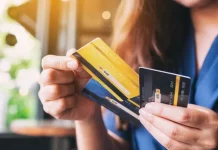Today, investments in coins from precious metals are very popular. Precious metals are not subject to inflation, and you do not need to spend hours understanding the world of cryptocurrencies, but keeping them at home is much safer than savings in a bank or any fund. But one way or another, even in such a seemingly reliable business, there are attackers who are trying to cash in on your inattention.
Table of Contents
How to identify a fake?
If you are going to invest in gold coins, it is important to be able to recognize counterfeit coins from genuine coins. Although coin counterfeiting is not common, there are many cases where counterfeit coins have been discovered after they have been bought or sold. Even experienced precious metal dealers can be fooled by high-quality counterfeit gold coins. There are a few tips to help you spot the most obvious fakes so you don’t get confused when choosing gold coins.
Counterfeit gold coins can be of any type, but perhaps the most popular is the Krugerrand. One way to avoid counterfeiting is to do business with a very reputable dealer who offers coin returns and whom you trust that if a counterfeit is discovered – be it British Sovereign or American gold coins – the problem will be resolved in a civilized way. In this case, it will be possible to avoid any losses on your part. Look at the color of the coin, and determine its weight. Tungsten is a very popular metal used to create counterfeits, as a result of which the weight and value of the final product are correct, and the diameter and thickness of the coin are not affected.
No matter what kind of coin you want to buy, be it the American Eagle or coins from another country, it is quite possible to identify a fake. Chinese “Pandas”, Canadian “Maple Leaves”, and other coins have been counterfeited with varying degrees of success. Look at the diameter and thickness of the coin, as a low-quality fake will immediately show itself in these parameters. The stampings on the front and back can also be different and distorted – and this is another factor that can determine the lack of authenticity.
You can also identify a fake by rubbing a coin with a soft jewelry cloth. On a genuine coin, there will be no trace, and on a fake, the gold coating will partially come off. Sometimes counterfeit coins can be identified by stains, as well as a strange smell on the hands. The magnetic test is an inexpensive and quick way to tell if a given coin is genuine or fake. Pure gold will not be attracted to a magnet, and the metal that the counterfeit is made of will stick to the magnet.
Summary
When buying gold coins, as with any other financial transaction, you should carefully check the seller. If in doubt, it is better to find another. Use the above methods of verification to ensure authenticity.








